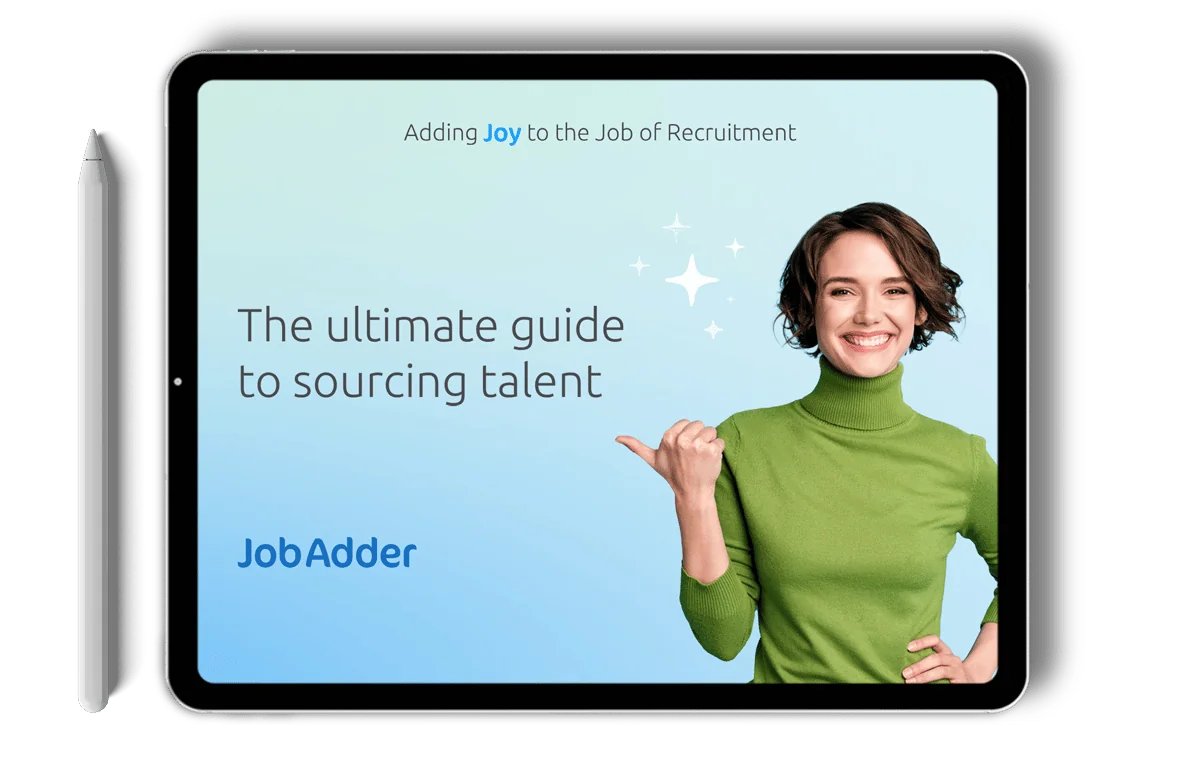Recruitment Blog
Understanding the S.T.A.R. interviewing method

The S.T.A.R. method is a popular way for interviewees to tackle behavioural-based interview questions.
Using the S.T.A.R. method can help interviewees craft clear, concise answers on the spot, and understanding the S.T.A.R. method can give interviewers priceless insights on job candidates.
So, what excatly is the S.T.A.R. interview technique?
The S.T.A.R. method and behavioural interview questions
S.T.A.R. is an acronym that stands for: Situation, Task, Action, Result.
The S.T.A.R. method is a response technique by interviewees to behavioural interview questions. Behavioural interview questions include questions like:
- Tell me about a time when you made a mistake?
- Give me an example of how you set goals?
- Tell me about a time when you navigated a workplace conflict?
Behavioural interview questions uncover information about a candidate’s past behaviour, and can help the interviewer predict how the candidate would behave with future work situations.
Let’s take a look at each step of the S.T.A.R. process in detail and discuss their value to recruiters.
S = Situation
First, we have the situation. This is the opening of their response for behavioural interview questions. For recruiters, this will ultimately allow you to understand and visualise how the candidate will respond to specific situations and scenarios.
For example, you may ask the candidate this: “Give me an example of a time you were faced with a deadline that you felt you weren’t going to meet?”
Their response could be: “When I was the product manager at company X I was in charge of running a team of eight product developers. We had to launch a new product by the end of the month. As we were nearing our deadline the office was hit with the flu and several of our developers were on sick leave.”
As you can see, their response points out the what and the who. What their role and situation were, and who was involved.
T = Task
Next, will be the task where it outlines the job the candidate had to face. What was the task the candidate had to complete? Who identified the problem and who was responsible?
The candidate should expand on their previous response and highlight how they came to realise they were falling behind on their project. They could respond with, “I realised that we were short-staffed, so the task became to find a quick solution to hitting our deadline, and it was my responsibility to make that happen.”
Be aware that some candidates may not be entirely familiar with behavioural interview questions and answers. So, they may stray away from certain points. Steer them back in by asking them to describe the task at hand and how they came to realise they were in a sticky situation.
A = Action
The action step is how the candidate approached and dealt with the task. It encompasses the steps to improving and/or fixing the primary situation that was mentioned at the beginning of the S.T.A.R interview question.
Adding on to the question, you could ask the candidate: “How did you resolve this situation and what was the process?” You’re essentially asking the candidate, ‘What did you do to fix the situation and how did you do it?’
Ideally, your candidate should take it step-by-step and run you through their thought process and how they came to a solution. This is also a great opportunity for the candidate to highlight their work-related skills such as time-management, leadership, productivity, teamwork, communication, etc.
R = Result
The final step is the outcome achieved as a result of the candidate’s actions. Was their goal accomplished? Did they solve the situation and dismantle the task at hand?
This step is arguably the most important. The candidate’s idea of how results were delivered can give you an idea of their attitude in the workplace and how they’ll mesh with your team.
At the end of the S.T.A.R interview, the candidate needs to bring their story to an end. Whether you’re expecting a happy ending is entirely dependent on the candidate’s experience and outcome, so be prepared.
Need help building your talent pool? Download our ultimate guide to sourcing talent.

Effectively using the S.T.A.R. process
When performed effectively and strategically, the S.T.A.R interview method and behavioural approach can result in achievable outcomes, but if poorly designed and planned, then the outcome may be skewed.
Recruiters are led to believe that by starting the interview question with ‘tell me about a time,’ that’s all there is to behavioural interview questions, but it’s more complicated than that.
In order for this interview method to be effective, the behavioural questions need to be integrated with the role requirements, in particular, the behavioural skill set and competency level.
After you, as the recruiter, have a clear idea of the role you’d like to fill, you can start thinking about the requirements, competencies, behaviours and skills required. After that, you can form and develop your behavioural interview questions, which would hopefully lead you to a successful candidate placement.
However, as with any interview methodology, there are pros and cons to the S.T.A.R. interview process.
Pros:
- Validated methodology
- Legally sound when implemented well
- Ensures more diversity and inclusion
- Ensures a more objective assessment of candidates
- Ensures the right fit for role, team and culture
- Recruiters learn in depth the type of person they are recruiting
- Candidates feel the process is a fair and quality approach
- Candidates are afforded their opportunity to shine, showcase their expertise and share their experiences
- It creates benchmarks for assessing high performers
- Identifies possible problems early
- Managers are able to develop very strong interviewing capabilities
Cons:
- It’s best when customised to the business, team and role
- Takes time and expertise to get it right
- Some candidates may not be familiar with the S.T.A.R. interview approach
Recruiters: How to prepare for a successful S.T.A.R. interview
If you want to conduct a successful S.T.A.R. interview, you’ll need to do some preparation beforehand.
There are a range of steps that hiring managers should take when preparing for a S.T.A.R. job interview, including reviewing the job description, thoroughly reading the candidate’s application and cover letter and formulating insightful S.T.A.R. interview questions.
Read on to delve into these steps in more detail.
Review your job description
Job descriptions clearly state the requirements and candidate expectations for the roles you’re filling.
To successfully prepare for a job interview, you should carefully review the job description in order to get an idea of the type of behaviours and experiences you’d like the candidate to have.
These components should directly inform the behavioural questions you ask in your S.T.A.R. interview.
These behavioural questions should be relevant to the job description and provide insight into how the candidate will respond to certain problem-solving situations.
Re-read the candidate’s application and cover letter
Those preparing for a S.T.A.R. interview should also familiarise themselves with the candidate’s application and cover letter. You should be aware of the candidate’s previous jobs, past experiences, soft skills and hard skills.
A successful interviewer will ask relevant questions (pulled from their application and cover letter) about a candidate’s previous work experiences, delving into their last job, specific examples and soft skills. Don’t just ask them to recite their resume!
This will help you gather more insightful information and real-life examples of how your candidate will act in the workplace.
Preparing insightful interview questions
It’s crucial that you formulate detailed and customised interview questions for each candidate, as these will help you understand exactly how a candidate will react to certain situations in the workplace.
Questions like “what does hard work look like to you?” or “what do you know about this company?” don’t help you gain insight as to how a candidate will perform in a specific role.
Asking more detailed, behavioural questions will yield better and more thoughtful interview answers and help you gather useful information as to how a candidate will perform in the workplace.
It’s a good idea to think about your ideal interview answers from potential candidates and reverse engineer your interview questions so you’re leading candidates to give you the most helpful and informative responses.
The best S.T.A.R. questions to ask in an interview
So, what kinds of questions should you be asking? How should your ideal candidates be responding during a S.T.A.R. interview?
Well, it depends on the qualities you want your potential candidates to possess. Let’s take a look at some of the questions you should ask for specific candidate qualities.
S.T.A.R interview questions about time management
- Tell me about a time you had to learn something you weren’t familiar with very quickly.
- Describe an occasion when you have faced conflicting deadlines?
- Can you describe a situation where you were required to do a number of things at the same time? What was the end result?
- When did you feel that you were unable to make a deadline? And how did you resolve the situation?
- You mentioned in your resume you were in charge of X project. How did you manage your time effectively?
S.T.A.R interview questions about decision making
- Tell me about a time you made a major decision. How did you go about making that, and what was the outcome?
- Please give me an example of a time when you had to be quick in coming to a decision. What obstacles did you face, and how did you overcome them?
- Give me an example of when taking your time to make a decision paid off.
- Tell me about a time when you were forced to make an unpopular decision.
- Give me an example of a time when you had to make a split-second decision. Walk me through the process.
S.T.A.R interview questions about leadership potential
- Can you tell me about a time when you took on a leadership role? What have been some of the challenges you have faced as a team leader?
- Tell me about a time when you had to go above and beyond in order to get a job done.
- Give me an example of a time when you motivated others.
- Have you had to convince a team to work on a project they weren’t thrilled about? How did you do it?
- Describe a time when you anticipated potential problems and developed preventive measures.
S.T.A.R. interview questions about communication
- Tell me about a time you felt you weren’t being listened to, and how you made your presence or opinion known to your colleagues.
- Tell me about a situation in which you had to deal with a very upset customer, client or co-worker.
- What is your typical way of dealing with conflict? Give me an example.
- What do you do if you disagree with a coworker?
- Describe a situation where you were able to use persuasion and knowledge to convince someone to see and understand things your way.
S.T.A.R. interview questions about teamwork
- Describe a team situation where things didn’t work out well. Briefly tell me what happened, and what would you do differently next time?
- Tell me about a time when you put your needs aside to help a co-worker understand a task. How did you assist them, and what was the result?
- Can you tell me about a situation where you and another team member were facing conflicts with projects and set responsibilities? How did you resolve the situation?
- How do you like working in a team? Can you describe to me a moment where you worked well with a team and a time you didn’t?
- Tell me about a time when you made a mistake that affected your team’s efforts. How did you rectify this?
Get more quality candidates for your open positions with JobAdder
Using the S.T.A.R. interview method can be extremely effective if leveraged correctly, ensuring you find quality candidates during the interview process.
However, it’s important to note that interviewing candidates is only half of the battle when it comes to hiring, you’ve also got to reach and find those quality candidates in the first place.
JobAdder can help you to discover quality candidates through our exclusive integrations with SEEK and LinkedIn and our seamless posting to over 200 job boards. You can also grow, track and search your talent pool in our platform, ensuring you always have quality candidates ready to go. Learn how JobAdder can help your business discover the best talent here.
Related blog posts

To excel in the competition for top talent, proactive workforce planning is essential. Traditional methods struggle to adapt to evolving …
Ready to get started?
Talk to one of our friendly team members



